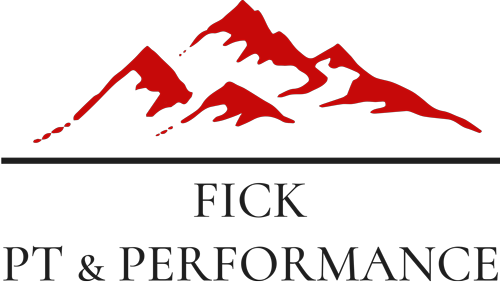Groin strains are a common injury that can affect people of all ages and activity levels. Whether you’re an athlete pushing your limits or someone simply going about your daily routine, understanding groin strains is crucial. In this comprehensive blog post, we’ll delve into the causes, symptoms, treatment options, and prevention strategies for groin strains, offering valuable insights and expert guidance from Fick PT & Performance.
Understanding Groin Strains
A groin strain occurs when the muscles or tendons in the inner thigh are stretched or torn. These injuries often happen during activities that involve sudden changes in direction, quick accelerations, or excessive force on the groin area. Athletes involved in sports like soccer, football, or hockey are particularly susceptible, but anyone can experience a groin strain.
Recognizing the Signs and Symptoms
The symptoms of a groin strain may include:
- Pain in the inner thigh or groin area
- Swelling and bruising
- Difficulty walking or moving the leg
- Muscle weakness
- Tenderness or discomfort when pressing on the affected area
Causes and Risk Factors
Several factors can contribute to the development of groin strains:
- Sudden, explosive movements
- Overstretching the groin muscles
- Weakness in the hip and core muscles
- Previous groin injuries
- Poor warm-up or insufficient flexibility
- Inadequate conditioning for the activity
Seeking Professional Help at Fick PT & Performance
Seeking professional care is a crucial step in effectively managing a groin strain. At Fick PT & Performance, our diagnostic process begins with a thorough physical examination, during which our experts assess the extent and nature of the injury. Additionally, we take the time to review your medical history and activity level, gaining valuable insights into your condition’s context and potential contributing factors. To assess the severity of the injury, we may recommend imaging tests such as ultrasound or MRI, ensuring a comprehensive evaluation.
Within our personalized treatment approach for groin strains, Fick PT & Performance crafts customized rehabilitation plans. These plans are tailored to address the specific needs of each individual and may encompass a range of therapeutic measures. This includes the application of manual therapy techniques aimed at reducing pain and improving muscle function in the affected area. Targeted exercises are designed to strengthen the groin and hip muscles, enhancing overall muscle stability and promoting healing. Modalities like ice or heat may be employed for pain relief, providing comfort during the recovery process. Functional training is also incorporated to help individuals regain mobility and prevent future strains. Furthermore, our team offers guidance on proper form and technique in sports and daily activities, equipping individuals with the knowledge needed to minimize the risk of reoccurrence and promote a full recovery.
Preventing Groin Strains
Preventing groin strains is paramount to ensure an active and injury-free lifestyle. These essential prevention strategies can make a significant difference:
A. Warm-Up and Stretching: Adequate warm-up routines before engaging in physical exercise are crucial. They prepare the muscles for activity and reduce the risk of strain. Dynamic stretching exercises, specifically tailored to improve flexibility and enhance the range of motion in the hip and groin area, play a vital role in injury prevention. Additionally, incorporating strengthening exercises for the hip and core muscles can improve overall stability and muscle support.
B. Proper Technique: Maintaining proper form and technique during sports and various physical activities is essential. Learning and practicing safe techniques can significantly reduce the risk of overloading the groin muscles or placing excessive strain on the area. Proper form ensures that movements are controlled, minimizing the potential for sudden, uncontrolled motions that can lead to injury.
C. Gradual Progression: Gradually increasing the intensity and duration of physical activities is a prudent approach to injury prevention. Avoiding excessive strain or overexertion is crucial to protecting the groin muscles from overuse. It’s essential to listen to your body and respect its limits, as pushing too hard too quickly can increase the risk of strain. Gradual progression allows the body to adapt and build strength over time, reducing the likelihood of injury.
By consistently incorporating these preventive measures into your routine, you can significantly reduce the risk of experiencing groin strains and enjoy a healthier, more active lifestyle while safeguarding your muscles and overall well-being.
Groin strains can be painful and disruptive, but with the expert care and guidance provided by Fick PT & Performance, individuals can effectively manage these injuries and regain their mobility and comfort. If you or someone you know is experiencing symptoms of a groin strain, do not hesitate to seek professional help.
Contact Fick PT & Performance today at (720) 480-2866 to schedule a consultation and embark on a journey towards recovery and optimal musculoskeletal health. Don’t let groin strains limit your activities or cause unnecessary discomfort.
Our dedicated team is committed to helping you conquer groin strains, providing you with the tools and knowledge to prevent future injuries and maintain an active, pain-free lifestyle.

